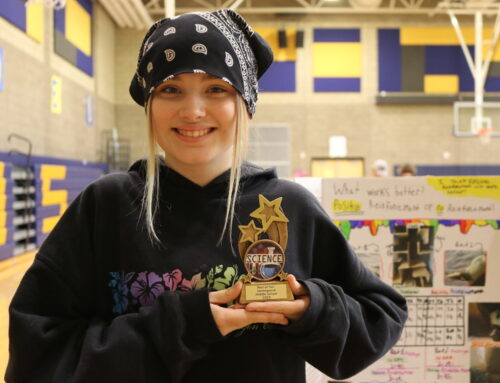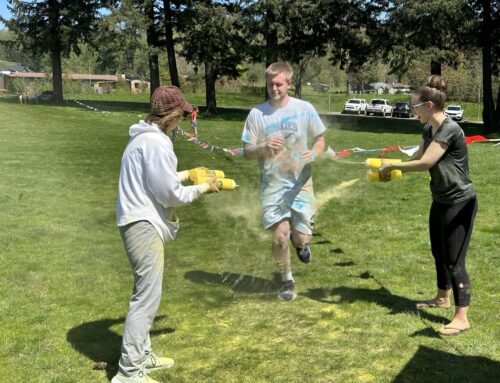Firm’s chief schools Washougal kids about soil at construction site
WASHOUGAL — When Lance Lehto goes to a school, he tries to bring as many hard hats, vests and goggles as he can.
The president of Columbia West Engineering said that schools are a niche for his firm, and oftentimes when they go to explore something at a school, they ask if any students would want to observe what’s being done.
That’s precisely what he did Friday, when he spoke to three of Mona Davies’ sixth-grade science classes about the work he and a crew were doing out near the track behind Jemtegaard Middle School.
“If I can make it fun and make it exciting to the kids, it seems like a nice thing to offer the school,” he said. “They always love all the safety equipment and putting on the hard hats. We’re at the school, anyway. We might as well show the students what we’re doing. It’s like a field trip in their backyard.”
In Jemtegaard’s backyard, ground is expected to break this summer on two new schools, an elementary school and a middle school that will eventually replace Jemtegaard. The design of the schools isn’t complete, but they will have a shared roof.
Columbia West engineers were out drilling by the track behind Jemtegaard, where a new parking lot will go. The hole was expected to go 30 to 50 feet down into the ground to test the soil and learn how the area could discharge stormwater.
Lehto brought each class out to the field to watch the drilling up close and see samples of dirt collected that day. He told the students they were searching for areas with more sand and gravel, as that lets water pass through more easily. From the samples, he showed the students that it looked like there was more gravel in the sample from about 15 feet below ground than from the sample about 5 feet down.
The engineers also showed students how they replace the auger at the tip of the drill with one to collect samples, since they don’t want the dirt all “chewed up” for the sample, Lehto said.
After collecting the samples, they’ll send them out to be processed at a lab and send the data out to a civil engineering firm.
Before taking the students out in the field, Lehto spoke to them in their class for about 15 minutes, telling them about his job and what he does.
“We are the first engineers in on a project because we have to study the ground,” he said.
He told the class that engineers have to like math and numbers, but the job focuses on more than that. Lehto said there are three aspects to his job: going out in the field to explore and investigate, working with their findings indoors, and doing quality control inspections on the building while it’s being built.
Davies welcomed the presentation to her classes because it shows the students how things they learn can apply to career opportunities.
“They have someone to talk to and see what they do,” she said. “In our new standards, engineering is a big focus. We do a lot more engineering work in class. I teach mostly earth science, and this connects the two, and connects them to the real world. I could see a handful of kids really engaged in the presentation.”









